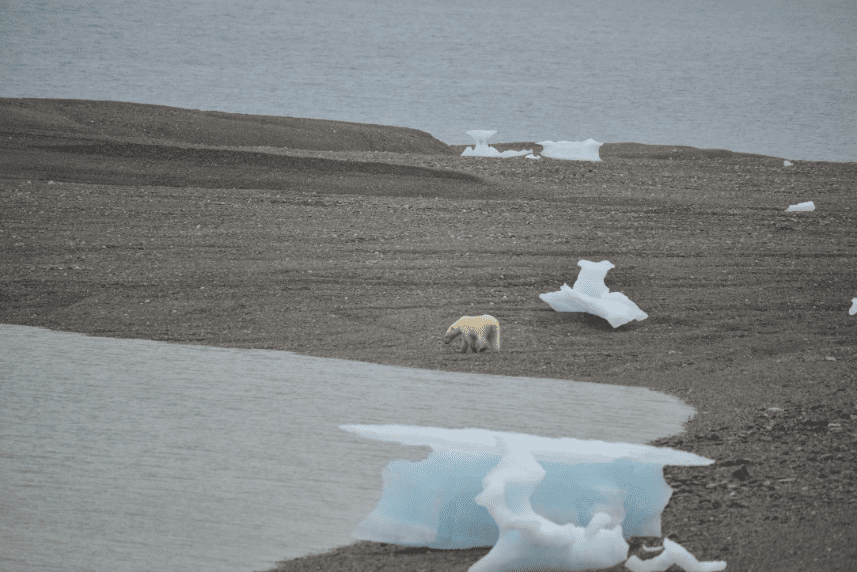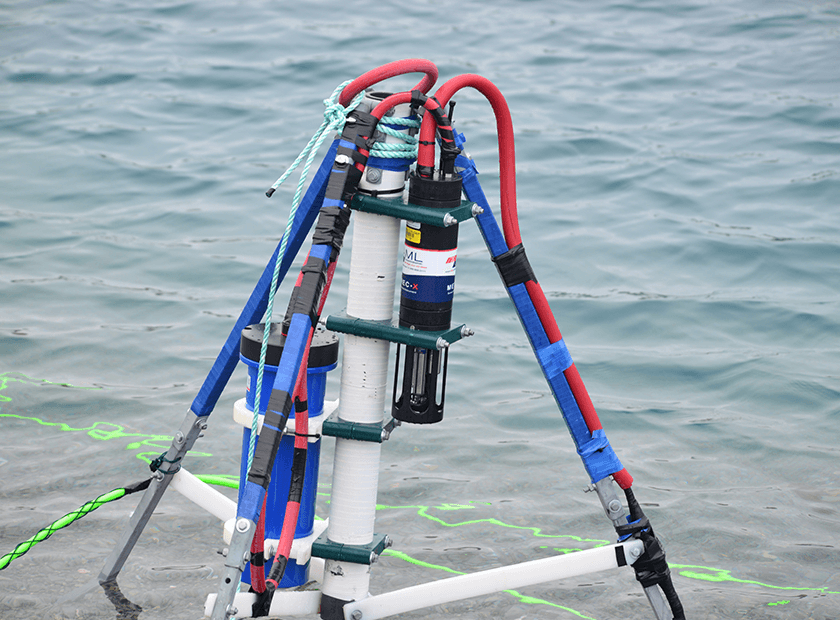Monitoring the Canadian Arctic: Easier with AML’s UV Biofouling Control
By: Ryan Flagg, Observatory Support Engineer - Ocean Networks Canada
Ocean Networks Canada recently tested several technologies and deployment techniques designed to reduce the cost and complexity of establishing subsea monitoring sites. This story features the development of an end-to-end power and communication system for real-time data transmission, and a successful “extreme-environment” demonstration of an AML Oceanographic multiparameter sonde with UV anti-fouling.
Challenge
The Arctic is one of the most rapidly changing areas on the planet, and is also one of the most difficult places to effectively monitor. Challenging logistics and fierce environmental conditions prevent most technologies and monitoring programs from ever setting foot there. In the face of global climate change, there is an immediate need for robust technological solutions and innovative deployment methods that can respond to this growing demand.

Figure 1 - Shore stranded sea-ice chunks and local residents in Gascoyne Inlet (Image courtesy of Ocean Networks Canada)
Gascoyne Inlet

Figure 2 - A relatively small (1.5m high) sea-ice chunk in Gascoyne Inlet can easily damage intertidal cables during tidal swings. (Image courtesy of Ocean Networks Canada)
Objective
Solution
Another element that needed to withstand the harsh environment and long deployment duration was the instrumentation: enter AML Oceanographic. Since the results of this test would dictate future monitoring and deployment techniques, the value of the data to be collected was high. With biofouling conditions unknown, preventative measures had to be taken. Given a strong desire to not deploy toxic anti-fouling substances in the Arctic’s fragile ecosystem, AML’s UV biofouling control technology was the ideal choice.
An AML Metrec•X sonde equipped with CTD, Turbidity, and Chlorophyll A sensors, protected by UV•Xchange biofouling control, was selected for the deployment (see first image). Additionally, AML’s modular design of all of their components allowed for their UV timer system – the Duty Cycle Controller – to be re-purposed for controlling power to the entire system, thereby allowing for an anticipated 1 year to 18 month deployment life using a standard subsea battery. The raw data are stored on the instrument and backed up on the “shore-buoy” before being transmitted back to Ocean Networks Canada at regular intervals. From there the data are made instantly available to the research community and to the general public for both viewing and download at www.oceannetworks.ca
Read The Full Story
Learn more about ONC's many approaches to arctic monitoring and its importance in sustaining wildlife, human culture, and infrastructure in the Journal of Ocean Technology.

Figure 5 - Pressure and Temperature data from the first 4 months of the Gascoyne Inlet deployment. Temperature settles to a steady -1.7 degrees C as the sea-ice forms at the surface. (Image courtesy of Ocean Networks Canada)
Not only is this test a successful “extreme-environment” demonstration of AML instrumentation and their UV anti-fouling systems, but also of an end-to-end power and communication system that AML helped to develop alongside Ocean Networks Canada and Oceanetic Measurement Ltd.
Ryan Flagg is the Observatory Support Engineer for Ocean Networks Canada (ONC). He implemented ONC’s first cabled “Community Observatory” in 2011 and led the installation of ONC’s first arctic observatory (Cambridge Bay, Nunavut) in 2012. He has helped lead almost every subsequent maintenance operation and continues to assist with community engagement and to take part in research and instrument testing in Cambridge Bay. Ryan is actively helping to propose, plan for, and implement new monitoring initiatives throughout the north and along Canada’s other coastlines. Outside ONC, Ryan has served as a Marine Engineering Systems Operator with the Canadian Armed Forces Navy Reserves for over fifteen years.
Learn how UV Biofouling Control can make a difference for you.
Whether it is preventing biofouling-induced drift to keep sensor data accurate, or keeping a camera lens clean to maintain a quality image, our UV antifouling technology optimizes the performance of the instrumentation that it is employed to protect.












